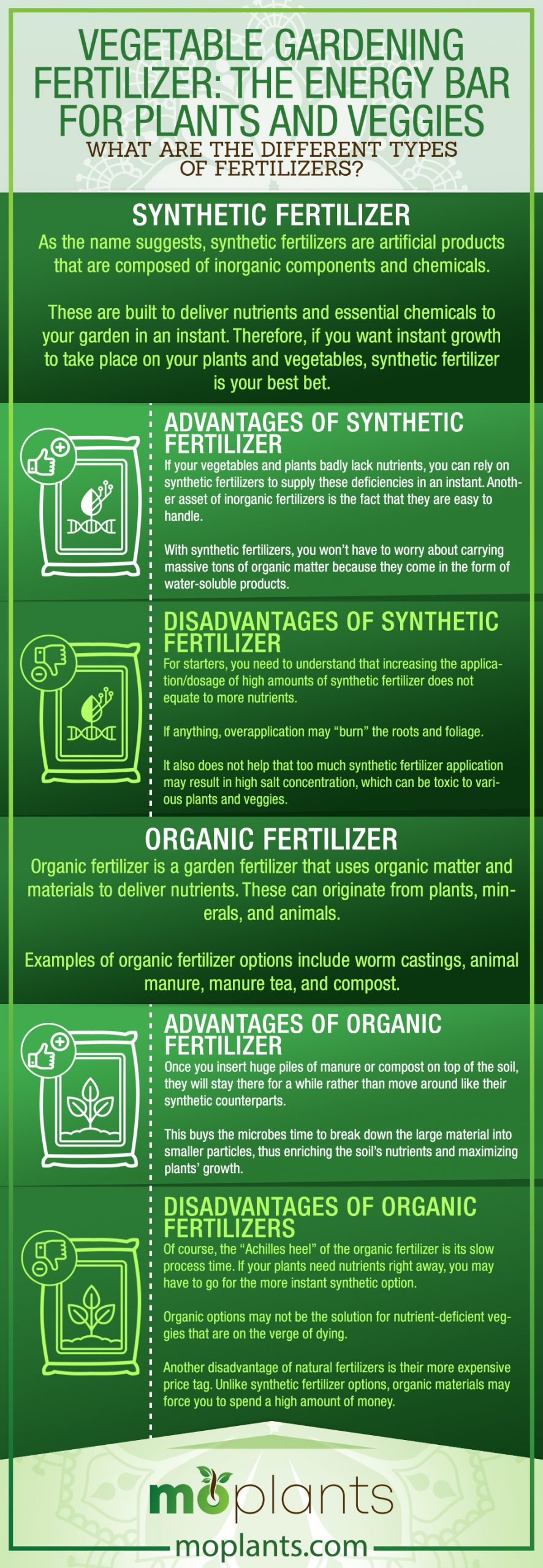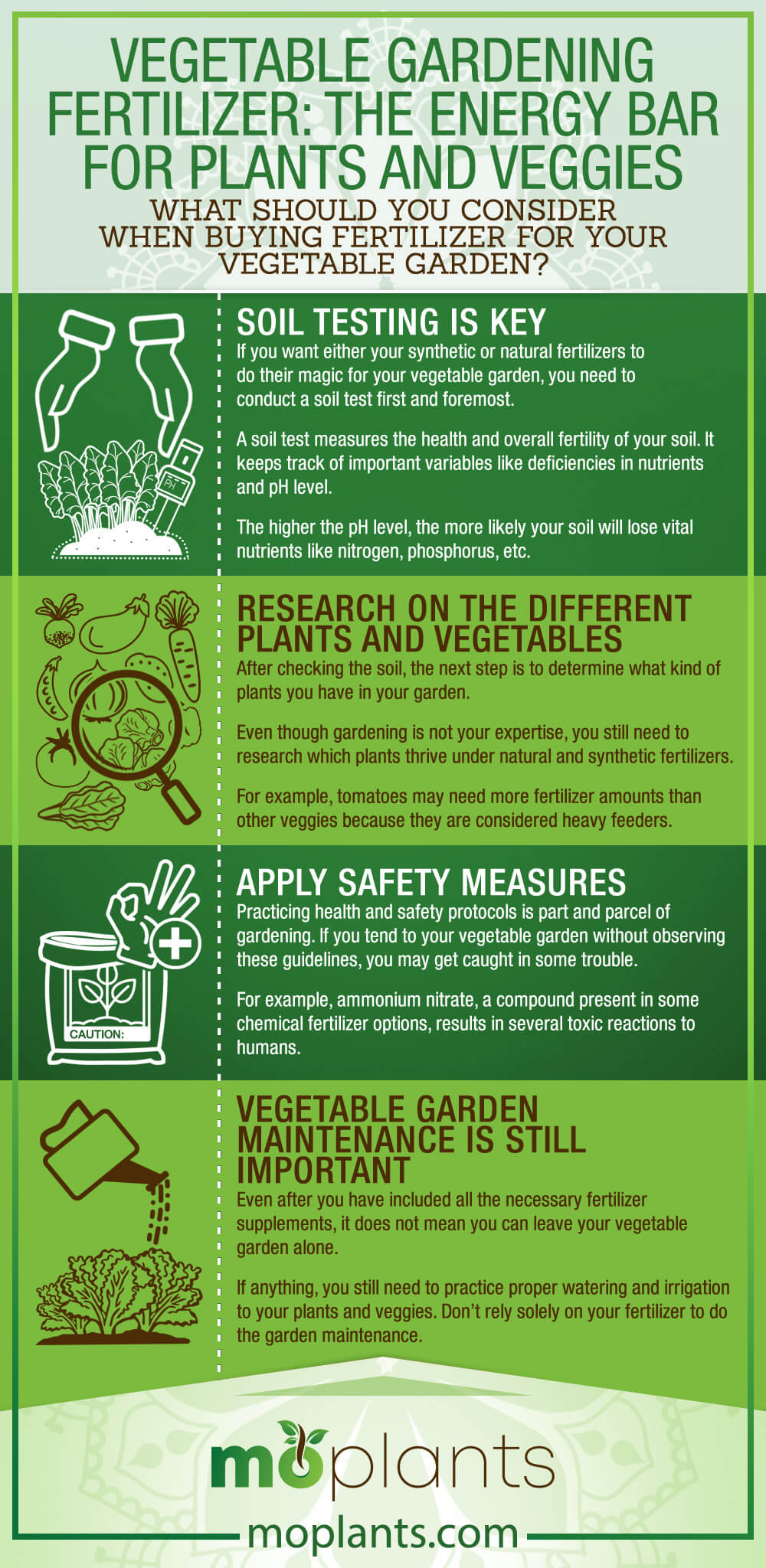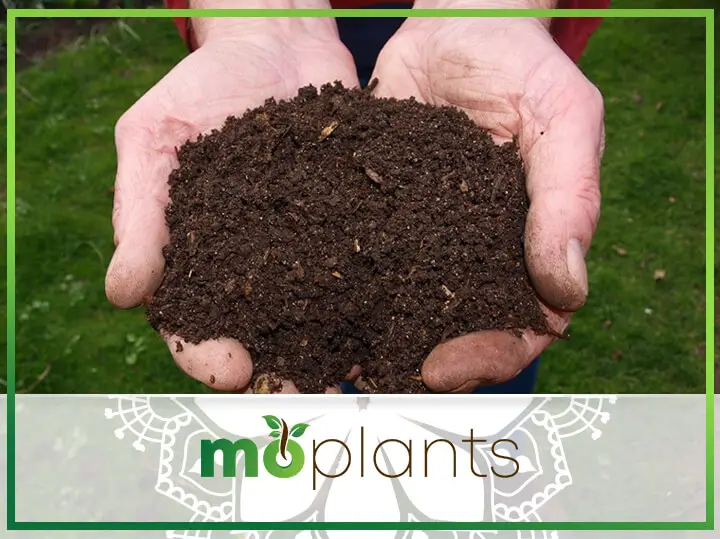Nutrients are essential when it comes to maintaining the vegetable garden. Unfortunately, the sun, soil, and water can’t do it alone.
You are going to need a boost from fertilizers if you want greener veggies and more bountiful yields.
However, please don’t feel overwhelmed because we are here to share some of the best garden fertilizer options to improve your garden.
By inputting the proper type and amounts, expect every day to feel like growing season.
What Is Fertilizer?
Before we discuss and identify the different fertilizer options applicable for your garden, we need to define what fertilizer is and determine what it does to your plants and soil.
If you are a beginner in gardening, fear not because we will give you a better understanding of the fertilizer, also known as every gardener’s best friend.
To simplify our definition, fertilizer is material coming from either natural or synthetic origin. It is responsible for providing your soil with much-needed nutrients for plant growth and development.
Regardless of the differences among all fertilizer types and products, the common denominator is the all have three vital nutrients: Nitrogen (N), Phosphorus (P), and Potassium (K).
Understanding Nitrogen, Phosphorus, and Potassium Levels
Whenever you purchase a fertilizer product, your nutrient levels are identified through three numbers. For example, the average fertilizer product is presented as “10-10-10”.
What do these numbers mean? If we do our fertilizer analysis, each number stands for the weight percentage of all three elements.
In terms of the order, the first number represents the percentage of nitrogen, the second number features the percentage phosphorus, while the last number showcases the percentage of potassium.
Let’s go over each element by discussing their roles on your veggies and plants. Doing so will give you an easier time understanding the numbers.
First Number: Nitrogen
Nitrogen is in charge of plant development above the soil. That means it ensures the foliage constantly grows and the leaves maintain their green color.
More often than not, many commercial lawn fertilizers will have high percentage levels of nitrogen. In short, the first number is definitely more than 10 in some fertilizer options.
Second Number: Phosphorus
If nitrogen takes care of the topmost areas, phosphorus does its job below the soil. If you want a better idea of what the element does, it ensures the root systems stay healthy.
Flowers and floral plants enjoy intaking phosphorus because it is responsible for blooming and the production of fruits.
If you buy a garden fertilizer designed for flower growth, expect a high phosphorous percentage in the middle number.
Third Number: Potassium
This may be considered the most important among the three elements because it keeps your plants and veggies healthy all year round.
“Why is this so?” you may ask. Unlike nitrogen and phosphorus, potassium has the ability to surround the plant tissues with strong cells.
Because of this, you won’t have to worry about diseases and insect infestations harming your vegetable garden. High potassium levels are present in fertilizer with a high third number.
What Are the Different Types of Fertilizers?
Now that you have a better understanding of the fertilizer’s role, its components, and how it benefits your vegetable garden, let’s go over the different types.
Basically, two types of fertilizers benefit most, if not all, vegetable gardens: synthetic and organic fertilizers.
Let’s go over each fertilizer type, its pros and cons, and how to decide to choose one over the other. One thing’s for sure: both fertilizer options cater to your gardening needs if you use them correctly.
Synthetic Fertilizer
As the name suggests, synthetic fertilizers are artificial products that are composed of inorganic components and chemicals.
These are built to deliver nutrients and essential chemicals to your garden in an instant.
Therefore, if you want instant growth to take place on your plants and vegetables, synthetic fertilizer is your best bet.
Synthetic Salts
An example of synthetic fertilizers is synthetic salts. You may think that this is similar to the salt you use for your meals. Contrary to popular belief, it is neither sodium chloride nor table salt. Here’s why.
On the one hand, sodium ions and chlorine ions make up table salt, making it harmful for your plants and veggies.
On the other hand, nitrogen fertilizer makes use of Ammonium nitrate, a byproduct of ammonium ions and nitrate ions. As a result, the synthetic garden fertilizer can also be considered salt.
Unfortunately, all types of salt can cause damage to your plant roots, but synthetic salts from fertilizer products are less harmful because they easily dissolve in water.
When this happens, Ammonium nitrate breaks down into individually diluted ions and nutrients to ensure soil microbes and roots’ safety.
These broken down ions deliver nutrients for your soil, plants, and veggies.
What Are the Advantages of Synthetic Fertilizer?
One advantage of using synthetic fertilizer is they act as “quick fixes” What do we mean by this?
Organic fertilizers usually take a while to deliver nutrients to the soil, plants, and veggies. Hence, it is no secret why some of them are called “slow-release fertilizers.”
If your vegetables and plants badly lack nutrients, you can rely on synthetic fertilizers to supply these deficiencies in an instant. Another asset of inorganic fertilizers is the fact that they are easy to handle.
Imagine trying to carry tons of animal manure, fish emulsion, or manure tea? Most gardeners would find it a hassle to deliver nutrients through compost or manure.
With synthetic fertilizers, you won’t have to worry about carrying massive tons of organic matter because they come in the form of water-soluble products.
Lastly, they are less expensive compared to their organic counterparts. So if you need fertilizer options that save you a couple of bucks, the synthetic ones should be your go-to options.
What Are the Disadvantages of Synthetic Fertilizer?
As much as synthetic fertilizer options guarantee rapid development of roots, unlimited supply of nutrients, and instant plant growth, the cons outweigh the pros. “How so?” you may be wondering.
For starters, you need to understand that increasing the application/dosage of high amounts of synthetic fertilizer does not equate to more nutrients.
If anything, overapplication may “burn” the roots and foliage.
It also does not help that too much synthetic fertilizer application may result in high salt concentration, which can be toxic to various plants and veggies.
Because they are inorganic in nature, they don’t do anything to improve soil conditions for the long-term.
Unlike organic fertilizers, which we will get to in a bit, synthetic fertilizers are not ideal for supporting soil microbes or other living creatures on the soil.
They also tend to rapidly release nutrients, leading to premature top growth before the roots have established themselves.
Too much foliage may lead to diseases all over your plants and vegetable garden.
Organic Fertilizer
Organic fertilizer is a garden fertilizer that uses organic matter and materials to deliver nutrients. These can originate from plants, minerals, and animals.
Examples of organic fertilizer options include worm castings, animal manure, manure tea, and compost.
The main difference between synthetic and organic fertilizer options is how the soil processes the nutrients. For the former, they are water-soluble molecules that the soil easily dissolves.
In the latter’s case, it will take a while for the soil to absorb the desired nutrients.
If you are curious about how the process occurs, soil microbes such as bacteria and fungi are responsible for turning organic matter into gold mines for the soil.
Basically, they eat the huge organic material, which then turns into smaller molecules and nutrients.
Organic Fertilizer Examples
You need to keep in mind because that not all vegetable gardens are the same.
Some gardening experts might have differing recommendations, such as more nitrogen than the other elements and vice versa.
That is because soil types, weather patterns, and other external factors may differ among each vegetable garden.
With that being said, here are some organic materials that possess superior amounts of nitrogen, phosphorus, and potassium.
- Nitrogen: Dried blood, cottonseed meal, blood meal, seaweed extract, and fish emulsion
- Phosphorus: Rock phosphate and bone meal
- Potassium: Sulfate of potash and greensand
As far as the release rate is concerned, all the natural ingredients contain different timelines.
So it’s up to you to decide which among the materials you want to go for depending on the rate you want for your vegetable garden.
- Fish emulsion: less than two weeks
- Blood meal and all manure types (manure tea, animal manure): 2-6 weeks
- Alfalfa, clover, and rye: 2-6 months
What Are the Advantages of Organic Fertilizer?
There are so many advantages natural fertilizers possess. Indeed, each benefit will satisfy all of your gardening needs.
One of which is the fact that the organic matter settles in your soil with the utmost ease.
Once you insert huge piles of manure or compost on top of the soil, they will stay there for a while rather than move around like their synthetic counterparts.
This buys the microbes time to break down the large material into smaller particles, thus enriching the soil’s nutrients and maximizing plants’ growth.
Also, you don’t need to worry about dehydration or burned foliage.
Manure and other organic material are organic and no-toxic, so you can apply as much as you want. If anything, the greater the amount, the more nutrients your garden will have in the long run.
Do you need more convincing?
What Are the Disadvantages of Organic Fertilizers?
Thankfully, the pros easily outweigh the cons, but you still to keep in mind the drawbacks of using organic fertilizer.
Depending on your garden setup and current setting, organic fertilizer may not be the ideal option for your garden.
Of course, the “Achilles heel” of the organic fertilizer is its slow process time. If your plants need nutrients right away, you may have to go for the more instant synthetic option.
Organic options may not be the solution for nutrient-deficient veggies that are on the verge of dying.
Another disadvantage of natural fertilizers is their more expensive price tag. Unlike synthetic fertilizer options, organic materials may force you to spend a high amount of money.
We may be nitpicking at this point, but most animal manure smells bad because animal poop makes up the material.
Other than these, your soil and entire vegetable garden should expect a significant boost with high yields of manure tea and compost.
Infographic

What Should You Consider When Buying Fertilizer for Your Vegetable Garden?
Soil Testing Is Key
If you want either your synthetic or natural fertilizers to do their magic for your vegetable garden, you need to conduct a soil test first and foremost. [R]
After all, testing your soils is an unwritten but critical practice when gardening.
A soil test measures the health and overall fertility of your soil. It keeps track of important variables like deficiencies in nutrients and pH level.
The higher the pH level, the more likely your soil will lose vital nutrients like nitrogen, phosphorus, etc.
Soil tests also differentiate the different soil types. These include clay, silt, sand, and loam soil.
The last thing you want is to miss out on the growing season because you purchased incompatible fertilizer products that won’t work on your vegetable gardens.
To avoid playing the guessing game, test your soils as often as you can to ensure that the plants will receive the nutrients it needs.
Research on the Different Plants and Vegetables
After checking the soil, the next step is to determine what kind of plants you have in your garden.
Even though gardening is not your expertise, you still need to research which plants thrive under natural and synthetic fertilizers.
For example, tomatoes may need more fertilizer amounts than other veggies because they are considered heavy feeders.
There are also some cases where other plants tend to be susceptible to synthetic products.
Most vegetable gardens contain burned veggies and premature plant development because they may have been giving more than the required amount.
Apply Safety Measures
Practicing health and safety protocols is part and parcel of gardening. If you tend to your vegetable garden without observing these guidelines, you may get caught in some trouble.
For example, ammonium nitrate, a compound present in some chemical fertilizer options, results in several toxic reactions to humans.
If you don’t cover your nose, its strong odor will penetrate it, causing nausea, vomiting, and headaches.
We want you to enjoy your gardening experience, but that can only happen if you keep yourself and your vegetables safe.
Vegetable Garden Maintenance Is Still Important
Even after you have included all the necessary fertilizer supplements, it does not mean you can leave your vegetable garden alone.
If anything, you still need to practice proper watering and irrigation to your plants and veggies. Don’t rely solely on your fertilizer to do the garden maintenance.
Although they play a huge role, your veggies will get the nutrients it needs if you apply ample sunlight, sufficient water, and proper care for your surroundings.
Infographic

Conclusion
We hope you have fun going over our article on fertilizers for your vegetable garden. Indeed, there is nothing that beats the excitement of seeing your plants grow and receive nutrients.
These goals can be achieved if you follow our recommendations, do additional research, and take proper care of your garden.
HAPPY PLANTING! For more questions or inquiries, please feel free to contact us.


